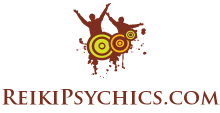Currently, there is an incredible amount of information one can find on the internet and in published books about the spiritual/healing art of Reiki. When I first became attuned to Reiki in 1980 there were no books available on the subject and, believe it or not, no internet. Reiki was taught orally as was the Western tradition back then.
Many people often misunderstand the Reiki or healing with energy. In this article we will be looking into 5 common myths about Reiki and how you can align yourself with the highest degree of healing.
Usui Reiki teachings and stories were passed down from teacher to student by word of mouth for several years. No wonder the stories got jumbled up! For the record, Mrs. Takata is widely respected in the Reiki community and is credited for introducing the world at large to the spiritual art called Reiki.
Reiki Myths
Myth #1: Reiki is a Religion
Reiki absolutely is a spiritual art. Theprinciple teachings of Reiki embrace a life of balance and promotes spiritual growth. But, Reiki is not a religion, nor is it based in any particular religious doctrine. Reiki does not infringe on anyone’s beliefs or personal values. People of many different faiths have discovered the love-energies Reiki offers.
 Myth #2: Dr. Usui was a Christian Monk
Myth #2: Dr. Usui was a Christian Monk
The founder of the Usui System of Reiki, Dr. Mikao (Mikaomi) Usui, was not a monk, a Christian, or a medical doctor. He was a Japanese Zen Buddhist, a businessman, spiritualist, and scholar. Late in his life, he experienced a profound spiritual enlightenment after a period of fasting and meditation.
Myth #3: Having a Reiki Attunement Will Open Up a Dialog with Your Spirit Guide
Ahhh… the lure to get a Reiki attunement with the promise of a glimpse into the spirit world. Please don’t fall for this. This myth may have arisen out of the writings from Diane Stein. In her widely published book Essential Reiki, Diane describes how many of her students became aware of who their guides were after months of using Reiki following their level II attunements. The urban legend that followed was that the attunement alone would make this happen. Some Reiki II classes include a promise to “Meet your Guides.” Yes, it could happen and likely has happened for some Reiki initiates, but there is no guarantee. This promise could set you up for a big disappointment. Hoping for a meeting with your guides or angels should not be the sole reason for signing up to take a Reiki class.
Myth #4: Reiki is a Massage Therapy
Reiki is NOT a massage therapy. Although there are many massage therapists who will incorporate the use of Reiki’s healing energies into their massage sessions. Reiki is an energy-based therapy that does not involve manipulating bones or tissues. Reiki practitioners use a light touch with their hands on their clients’ bodies or will hover their palms over them.
Myth #5: Giving Reiki to Others Depletes Your Own Energy.
A Reiki practitioner does not give his personal energy over to the client. He serves as a channel, funneling Universal Life Energy through his body to the recipient. Much like the delivery boy delivering a package on your doorstep. The Reiki package is delivered, the delivery boy goes home fully intact. Ki energies are infinite and never run out. This does not mean that a person giving Reiki may not feel tired after giving a treatment to someone. This sometimes happens and Reiki has been wrongly blamed for it. If a person giving a treatment experiences exhaustion during or after applying Reiki to others, this is likely an indication that something is out-of-balance in his own body or life that needs attention. Booking a healing session for himself with another practitioner or conducting self-treatments would be warranted.


The analogy of the Reiki practitioner as a delivery boy is a helpful way to understand the concept of channeling energy without depletion.
It’s good to see myths about Reiki being addressed. Dispelling misconceptions is crucial for a clearer understanding of what Reiki truly is.
I agree, it’s important to base our knowledge on accurate and verifiable information.
Absolutely, clarity helps in eliminating unwarranted skepticism and promotes a more informed practice.
The clarification on Reiki not being a massage therapy is important. It’s crucial to distinguish between different forms of healing and their methodologies.
The evolution of Reiki information availability is fascinating. It’s intriguing to think about how practices that were once verbally transmitted are now widely documented.
This also raises interesting questions about the accuracy and consistency of teachings over time.
Indeed, the shift from oral to written tradition has certainly made learning more accessible to a broader audience.
The historical tidbits about Dr. Usui and Mrs. Takata are quite enlightening. Understanding the roots of Reiki adds depth to its practice.
It’s interesting to note that feeling tired after performing Reiki could indicate an imbalance in the practitioner’s own life. This underscores the importance of self-care for healers.
Yes, self-care is essential for those who are in the profession of caring for others. It’s a reminder that healers are human too.